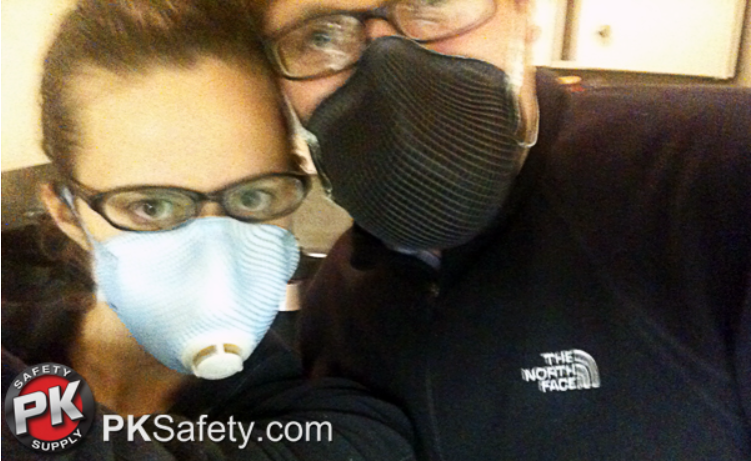This weekend was kind of a nightmare. After getting rear-ended on my way home from work, I decided to make myself a much-deserved cup of tea—except instead of turning on the burner below my pot of lukewarm water, I accidentally flipped the one to the right.* After only about thirty seconds my husband and I noticed smoke coming from the kitchen. Peter hopped off the couch, ran into the kitchen, and managed to take the leftover piece of plastic** from flames to a warped cooling mess. Immediately, I turned off the smoke detector (our dogs were going nuts), opened our back door, and turned on every fan in the apartment to try to air out that smell. There really is no smell like burning plastic. Not knowing what exactfuly we might be breathing in Peter and I dug through our home improvement drawer and pulled out two Moldex dust masks. For the next hour or so we sat around watching Buffy the Vampire Slayer while sporting this oh-so-fashionable look. It was a weekend to remember.
But now that things have calmed down, nothing is on fire, and we’re not worried about any poisonous fumes let’s take a minute to evaluate our choice in respirators. After consulting Rick, I learned that if Peter and I wanted to be really safe we should have tossed on a 3M 7500, or better yet the 3M 6000 to keep our eyes safe from the toxic fumes. Either of these masks would have formed a better seal around our faces, helping to keep more of the plastic particles out. We would have wanted to outfit either mask with the 3M 60926 P100 cartridge. This cartridge combines a P100 filter with a carbon cartridge. The P100 part of the cartridge would filter out the weird plastic particulates and the carbon half of it would absorb the weird plastic fumes before we could breathe them in. Of course Rick was quick to note that if I wanted to set plastic on fire all the time, then I’d really need to suit up in an airline respirator.
So, was it completely pointless for Peter and me to throw on dust masks? Rick assured me that it wasn’t. In this case something was definitely better than nothing, and we did succeed in blocking out any of the larger sized particles. Thinking of the gross fumes that we were breathing in, I definitely think it’s worth getting a couple of better respirators to have around the house just in case.
*-Note to Self: Don’t do anything potentially dangerous, like turn on a burner, when you’re frazzled. **-Second Note to Self- Learn to keep a cleaner kitchen.


